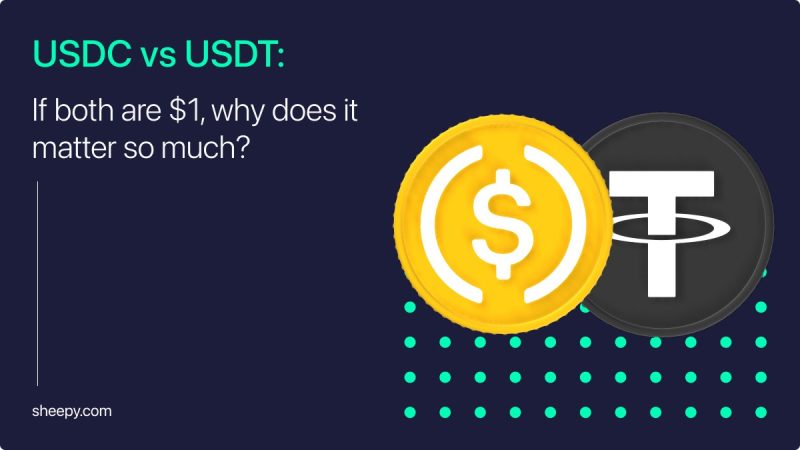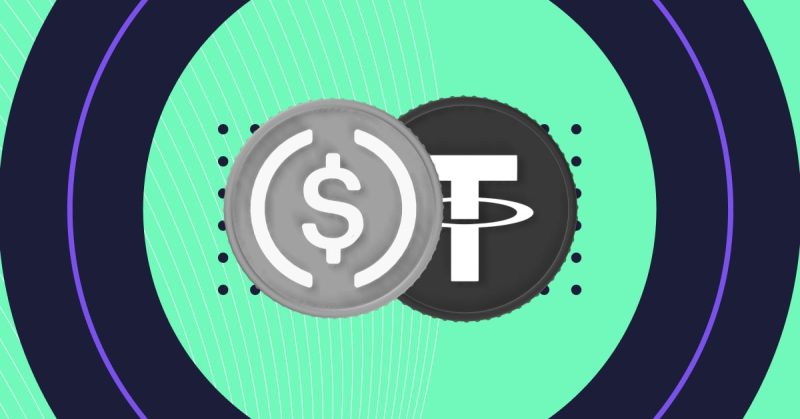In the fast-moving world of crypto, stablecoins have become a vital bridge between digital assets and traditional finance. Among the most popular options, the USDC vs USDT debate continues to spark interest. While both aim to offer a stable value tied to the USD, their differences go deeper than many realize. From compliance to utility, these coins shape how businesses and users interact with crypto today. Let’s explore what makes them alike – and what sets them apart.

Transparency and regulatory alignment
When talking about USDC vs USDT, the first thing that comes up is trust. And trust often comes from how open and regulated a stablecoin is. USDC is managed by a company called Circle, which is based in the United States. That matters because Circle follows strict rules from US regulators. They publish regular reports and let third-party firms check their reserves. This gives people confidence that every USDC coin is backed by real money. That’s a big deal for users who want more than just promises.
USDT, on the other hand, is run by a company called Tether. Tether has faced questions in the past about what exactly backs its tokens. While they have become more transparent over time, some still see a gap. Tether does release reports, but they are not as detailed as what Circle offers for USDC. This difference in clarity is often the biggest point in this debate. People and companies who care about compliance often lean toward USDC. It feels safer and more in line with traditional finance.
But that doesn’t mean USDT isn’t popular. In fact, it still leads the stablecoin market in trading volume. Many users are okay with a little less clarity if it means faster access and wider use. So when asking what is USDC vs USDT really about, it’s not just numbers. It’s about how much you value transparency and regulation. For some, that’s the deciding factor in choosing which coin to trust.
Market dominance and adoption across sectors
The USDC vs USDT discussion isn’t just about how each coin is built – it’s also about where and how they’re used. USDT has been around longer and is by far the most traded stablecoin in the world. If you look at any major crypto exchange, you’ll likely see USDT being used in more pairs than any other token. This matters because liquidity makes trading smoother and faster. USDT crypto activity dominates in many markets, especially in Asia, where speed and cost matter more than strict compliance.
USDC, while smaller in total volume, has a strong presence in more regulated environments. In places like the United States or Europe, USDC coin is often the preferred choice for fintech platforms and apps that want to stay in line with local laws. The question of what is USDC vs USDT sometimes comes down to who is using the coin and why. Large companies, especially those linked to Silicon Valley, tend to pick USDC. They like that Circle is a U.S. company and that its operations look more like those of a traditional financial firm.
That said, USDT continues to lead in adoption across emerging markets. In countries where banking access is limited, USDT offers a simple way to move USD-like value. It’s also used often in peer-to-peer trading, giving people real freedom to interact with crypto. So the USDT vs USDC difference isn’t just technical – it’s cultural. One is shaped by compliance, the other by access. And that shapes the way people all over the world choose between them.

How payment processors bridge the stablecoin gap
As more companies explore crypto payments, they often face a key decision: USDC vs USDT. Each coin brings something different to the table. Businesses want fast, low-fee payments, but they also need something stable and reliable. That’s where payment processors come in. These platforms make it easier for companies to accept stablecoins without diving into technical details. One of the tools helping with this shift is Sheepy crypto, a service that lets businesses accept crypto payments – including USDC and USDT – with minimal effort.
Many companies don’t have time or resources to manage wallets, track blockchain confirmations, or deal with exchange risks. That’s why solutions like Sheepy are useful. They take care of the hard part, offering a simple way to start accepting stablecoins. When a customer sends USDT crypto, or even USDC coin, the payment goes through quickly and can be converted to traditional money if needed. This helps bridge the gap between crypto and the real-world economy, especially in sectors that move fast and need flexible payment tools.
The difference also plays out here. Some merchants prefer USDC for its stronger links to regulation and the USD banking system. Others go for USDT because it’s widely used and accepted. What makes platforms that help businesses accept crypto payments – like Sheepy crypto payment gateway – so valuable is that they don’t force a choice. They offer both options and let the business decide. In a world where crypto keeps growing, having the freedom to work with either coin – without extra hassle – can be the edge that keeps a company moving forward.
Blockchain compatibility and transaction dynamics
When we talk about USDC vs USDT, it’s also important to look at where and how these coins work on different blockchains. Both stablecoins run on several networks, which means they can move quickly and at low cost. But they don’t always run the same way. USDT was first launched on the Bitcoin-based Omni layer, and later expanded to Ethereum, Tron, and others. Today, USDT crypto is most commonly used on the Tron network because of its low fees and fast transfers. That makes it popular in high-volume environments like crypto exchanges and peer-to-peer platforms.
USDC started on Ethereum and has expanded more carefully across blockchains like Solana, Avalanche, and Polygon. These networks focus on speed and smart contract features, which makes USDC coin attractive to developers and businesses working on DeFi and financial apps. The USDT vs USDC difference here is subtle, but real. Some networks offer better support for one over the other. So if a business is building on a blockchain like Solana, it might lean toward USDC. If speed and adoption are more important, USDT might be the better fit.
Understanding what is USDC vs USDT also means understanding the cost of moving funds. USDC vs USDT fees depend on the network used. A transfer on Ethereum can cost much more than one on Tron. That matters for anyone who needs to move money often. For companies and users alike, these technical details shape real-world choices. Which coin is better often comes down to where you use it and how much you’re willing to spend to move value.
Use cases in real-world payments
The real test of any stablecoin isn’t just in code or theory – it’s in how people use it. The USDC vs USDT debate becomes most interesting when we look at daily transactions. USDT is everywhere in the crypto world. It’s used by traders, exchanges, and peer-to-peer users. For many, it’s the default currency for moving USD value. This wide use makes it easy to find, easy to spend, and easy to accept. Whether you’re buying crypto, sending money abroad, or saving in digital dollars, USDT crypto is often the go-to choice.
USDC has taken a different path. It’s found its place in sectors that want more control and clarity. Financial platforms that follow U.S. rules often pick USDC coin for that reason. When someone asks what is USDC, they usually hear about its ties to regulated finance. And that’s not just talk. In the U.S. and Europe, more fintech apps, online services, and even some banks have started working with USDC. It offers a blend of crypto speed with traditional stability, which helps it stand out.
The USDT vs USDC difference shows itself clearly when businesses decide which one to use. One coin offers reach and volume, the other offers trust and structure. But both are tools that help people work around borders and delays. They help users pay, earn, and grow in the digital economy. So when you ask what is USDC vs USDT really about, the answer lies in how the world uses them – not just in how they’re built.
The USDC vs USDT debate isn’t about which coin is perfect – it’s about which fits your needs. USDT leads in usage and reach, while USDC offers more oversight and structure. Whether you’re a trader, a startup, or a global business, understanding their strengths helps you make better choices. As crypto keeps growing, stablecoins like these will stay at the center of payments and innovation. And with crypto payment gateways making it easier to use both, it’s never been simpler to join the digital economy with confidence and control.
